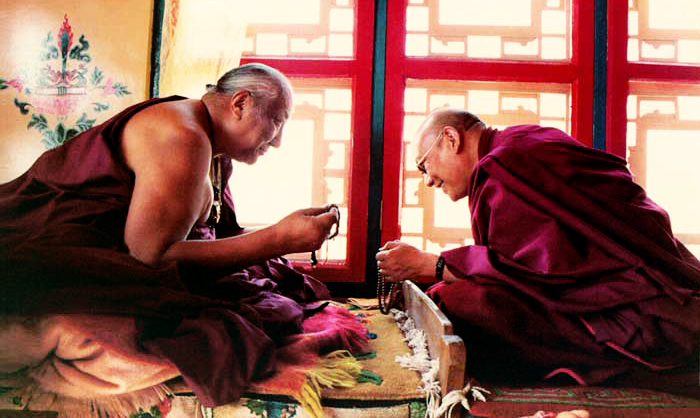 Khyense Dilgo Rinpoche (teacher of the XIV Dalai Lama) was an admirer of rare and ancient objects related to the spiritual quest, he was 12 years study and meditation in a secluded cave in the mountains of Tibet. Always wore amulets during its existence, together with Dzi Beads, Gau, bracelets and other relics dating back to the time of the historical Buddha and other masters believers. Gyalse Trulke from Satsam Chorten (in Paro, Bhutan) argues that the amulets such as tanka, mandalas and symbolic representations made by men and women of strong faith, help to illuminate living beings, they are perceived through our five senses of light and are able to liberate and protect the people. Today the Theng Ngna ‘are almost unknown to the Tibetans themselves. Their true meaning has been destroyed by the many sufferings inflicted on the people by the violent imposed by the Chinese government. Along with ancient ceremonies and rituals otherworldly these legendary amulets try to survive the insidious western modernism, die in their tracks. Hide their appearance in the definitions of the various languages, dialects and mysteries that co-exist in the rugged and majestic himalayan geography; Theng Ngna, Ga’u, Chos skyong sgrog gdung, Lackpa taya, Norbu dzi or Thog chags, are some of the many names. In 1959, after the communist invasion, the Dalai Lama fled from Tibet. The elderly Lama and officials who accompanied him in exile took with their jewelry very valuable. Coral, lapis lazuli, turquoise and amber formed, along with ritual objects, the different bracelets used as amulets. Some monks brought the mysterious stones of agate Dzi.
Khyense Dilgo Rinpoche (teacher of the XIV Dalai Lama) was an admirer of rare and ancient objects related to the spiritual quest, he was 12 years study and meditation in a secluded cave in the mountains of Tibet. Always wore amulets during its existence, together with Dzi Beads, Gau, bracelets and other relics dating back to the time of the historical Buddha and other masters believers. Gyalse Trulke from Satsam Chorten (in Paro, Bhutan) argues that the amulets such as tanka, mandalas and symbolic representations made by men and women of strong faith, help to illuminate living beings, they are perceived through our five senses of light and are able to liberate and protect the people. Today the Theng Ngna ‘are almost unknown to the Tibetans themselves. Their true meaning has been destroyed by the many sufferings inflicted on the people by the violent imposed by the Chinese government. Along with ancient ceremonies and rituals otherworldly these legendary amulets try to survive the insidious western modernism, die in their tracks. Hide their appearance in the definitions of the various languages, dialects and mysteries that co-exist in the rugged and majestic himalayan geography; Theng Ngna, Ga’u, Chos skyong sgrog gdung, Lackpa taya, Norbu dzi or Thog chags, are some of the many names. In 1959, after the communist invasion, the Dalai Lama fled from Tibet. The elderly Lama and officials who accompanied him in exile took with their jewelry very valuable. Coral, lapis lazuli, turquoise and amber formed, along with ritual objects, the different bracelets used as amulets. Some monks brought the mysterious stones of agate Dzi.




